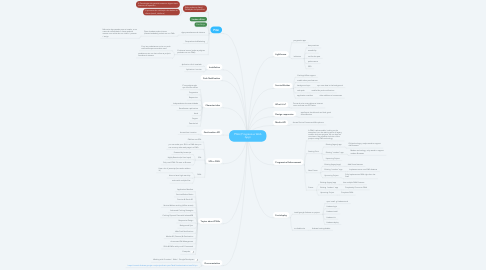
1. Lighthouse
1.1. progressive app
1.2. indicators
1.2.1. best practices
1.2.2. acessibility
1.2.3. verifies the pwa
1.2.4. performance
1.2.5. SEO
2. ServiceWorker
2.1. Caching/offline support
2.2. enable other pwa features
2.3. background sync
2.3.1. sync user data in the background
2.4. web push
2.4.1. mobile-like push notifications
2.5. application manifest
2.5.1. allos addition to homescreen
3. Pitzi
3.1. [Não podemos fazer] Validação de Aparelhos
3.1.1. A Tecnologia não permite acesso a alguns itens internos do aparelho.
3.1.2. O processo de validação dos dados do cliente (email, telefone)
3.2. Vendas off-line
3.3. Pitzi Ninja
3.4. App para abertura de sinistros
3.4.1. Fluxo de abertura de sinistros (cliente/vendedor) poderia ser um PWA
3.4.1.1. Não seria algo pesado para se instalar, e em casos de necessidade o cliente poderia acessar com celular de um vizinho / parente / amigo
3.5. Campanhas de Marketing
3.6. O sistema interno (todas as páginas poderiam ser um PWA)
3.6.1. Com isso poderiamos enviar um push notifications para os admin users
3.6.2. poderiamos ter um chat online na própria interface do sistema
4. Installation
4.1. Aplicativo não é instalado
4.2. Aplicativo é um site
5. Push Notification
6. What it is?
6.1. Forma de criar uma página na internet como se fosse um APP nativo
7. Characteristics
7.1. É uma página web que funciona offline
7.2. Progressivo
7.3. Responsivo
7.4. Independente de conectividade
7.5. Semelhante a aplicativos
7.6. Atual
7.7. Seguro
7.8. Descobrível
8. Design responsive
8.1. app/layout should work and look good across devices
9. Geolocation API
9.1. Access User Location
10. Media API
10.1. Access Device Camera and Microphone
11. SPA x PWA
11.1. PWA are not SPA
11.2. you can make your SPA in a PWA also you can turn any other web page in a PWA
11.3. SPA
11.3.1. Powered by Javascript
11.3.2. Highly Reactive (to User Input)
11.3.3. Only one HTML File sent to Browser
11.4. PWA
11.4.1. Uses a lot of javascript (but works without it!)
11.4.2. Aims to have high reactivity
11.4.3. works with multiple files
12. Progressive Enhancement
12.1. A PWA is enhanceable, looking on the examples, from the starting point of legacy, modern and new projects, we can have an overview of the possible evolution of the projects using PWA technology
12.2. Starting Point
12.2.1. Existing (legacy) app
12.2.1.1. Old technologoy, mayb needs to support old Browsers
12.2.2. Existing "modern" app
12.2.2.1. Modern technology, only needs to support modern Browsers
12.2.3. Upcoming Project
12.3. Near Future
12.3.1. Existing (legacy) app)
12.3.1.1. Add Some features
12.3.2. Existing "modern" app
12.3.2.1. Implement some core PWA features
12.3.3. Upcoming Project
12.3.3.1. Fully Implement as PWA right from the Start
12.4. Future
12.4.1. Existing (legacy) app
12.4.1.1. Use multiple PWA Features
12.4.2. Existing "modern" app
12.4.2.1. Completely Convert to PWA
12.4.3. Upcoming Project
12.4.3.1. Complete PWA
13. Topics about PWAs
13.1. Application Manifest
13.2. Service Worker Basics
13.3. Promise & Fetch API
13.4. Service Worker caching (offline access)
13.5. Advanced Caching Strategies
13.6. Caching Dynamic Data with IndexedDB
13.7. Responsive Design
13.8. Background Sync
13.9. Web Push Notifications
13.10. Media API (Camera) & Geolocation
13.11. Automated SW Management
13.12. SPAs & PWAs with your #1 Framework
13.13. Examples
14. Fast deploy
14.1. install google firebase on project
14.1.1. npm install -g firebase-tools
14.1.2. firebase login
14.1.3. firebase install
14.1.4. firebase init
14.1.5. firebase deploy
14.2. to disable site
14.2.1. firebase hosting:disable
